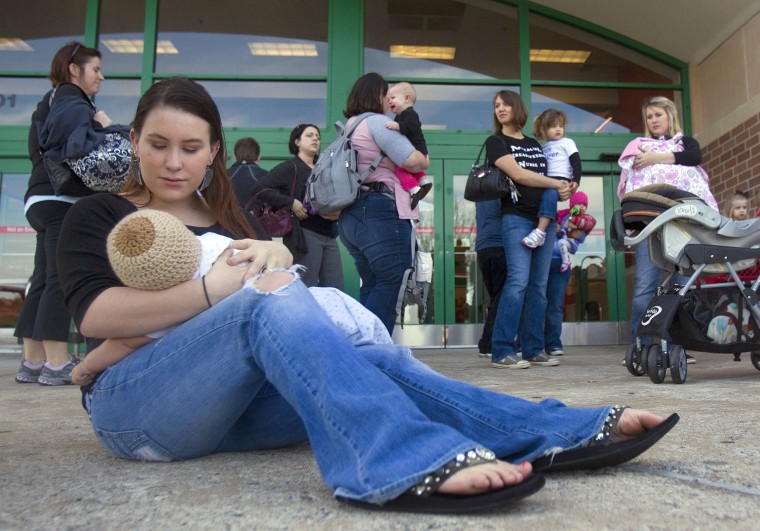Half of all new moms in the US now breastfeed their babies for the recommended minimum of six months, according to new data released Wednesday.
It’s a big increase from just 35 percent in 2000 and is good news for babies and moms alike, as breastfeeding boosts the immune system, may lower the risk of obesity and is even linked with higher intelligence.
“This is great news for the health of our nation because babies who are breastfed have lower risks of ear and gastrointestinal infections, diabetes and obesity, and mothers who breastfeed have lower risks of breast and ovarian cancers,” said Centers for Disease Control and Prevention director Dr. Tom Frieden.
The American Academy of Pediatrics recommends that newborns get nothing but breastmilk until they are six months old. The AAP recommends that mothers continue to breastfeed, along with giving other food, after six months for at least a year or even longer “as mutually desired by mother and infant.”
Studies show that babies given nothing but breastmilk for the first four months of life have a 72 percent lower risk of severe pneumonia and other lower respiratory tract infections for their first year. If moms stop breastfeeding between four and six months, their babies have four times the risk of pneumonia compared to moms who breastfeed for a year or longer.
Breastmilk contains the nutrients that a newborn baby needs and also transfers disease-fighting antibodies from mother to baby – something that’s very important for the first few months before an infant can be vaccinated. There’s also a growing body of evidence that beneficial bacteria, and perhaps also viruses and fungi, from a mother’s milk and skin can affect her baby’s health.
“Also, breastfeeding lowers health care costs,” Frieden says. “Researchers have calculated that $2.2 billion in yearly medical costs could be saved if breastfeeding recommendations were met. It is critical that we continue working to improve hospital, community and workplace support for breastfeeding mothers and babies and realize these cost savings.”
The CDC team looked at its National Immunization Survey, which included data on 8,436 babies.
“Of infants born in 2010, 49 percent were breastfeeding at 6 months, up from 35 percent in 2000,” the report reads. “The breastfeeding rate at 12 months increased from 16 percent to 27 percent during that same time period.” And 77 percent of new mothers at least tried to breastfeed at first.
Research also shows that what happens right after delivery is very important to ensuring that mothers start to breastfeed their newborns. If newborns stay with their mothers for at least 23 hours a day, as opposed to going to a hospital nursery, they are far more likely to be breastfed.
“The percent of hospitals reporting newborn babies that ‘room in’ with their mother at least 23 hours per day increased from about 30 percent in 2007 to 37 percent in 2011,” the CDC report reads. In 2011, 54 percent of newborns were placed in direct skin-to-skin contact with their moms.
“The period right after a baby is born is a critical time for establishing breastfeeding,” said Janet Collins, director of CDC’s Division of Nutrition, Physical Activity, and Obesity. “Rooming in and skin-to-skin contact help ensure that mothers and babies stay together and are able to start and continue breastfeeding.”
Global health officials have been pushing hard to encourage breastfeeding. According to the United Nations, only 42 per cent of newborns in the world are put to the breast within an hour of birth. "Regional averages range from a high of 56 per cent in Eastern and Southern Africa to a low of 39 per cent in South Asia," the U.N. says.
In the developing world, people often feel formula is healthier and more modern. In the developed world, one of the biggest barriers to long-term breastfeeding comes when women have to return to work.
